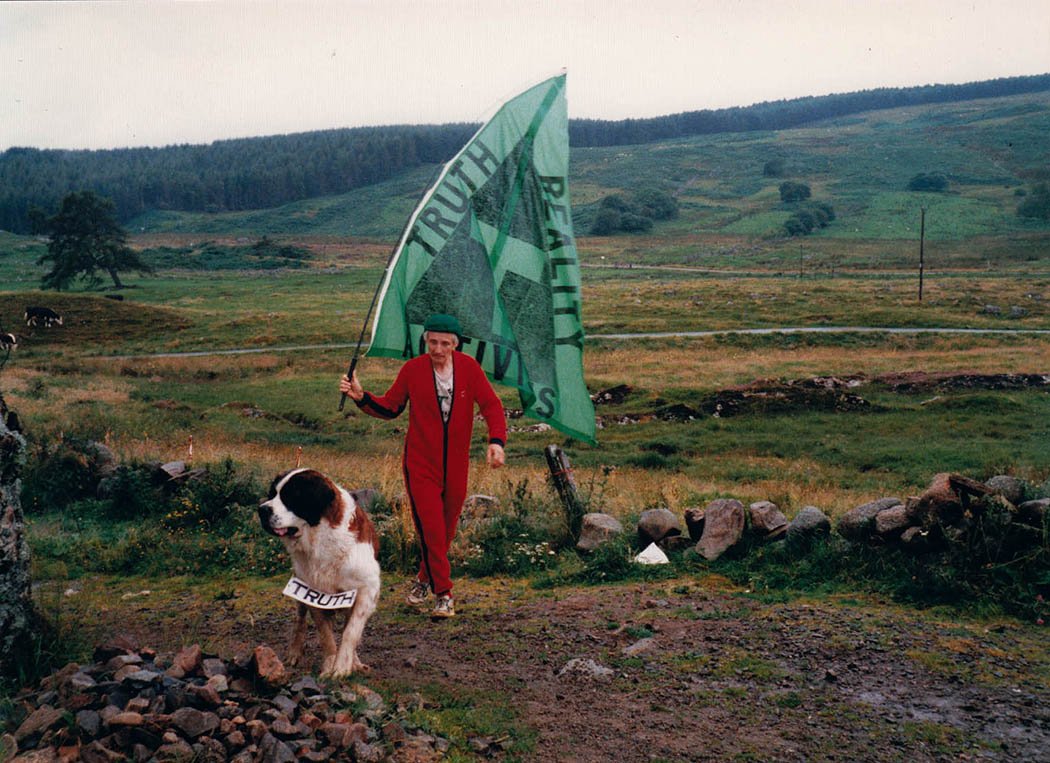
Matt Stokes
A winding walk through East London’s Mile End Park leads you to an unassuming door with a small sign as your only pointer: Matt’s Gallery. The modest approach is unexpected though characteristic of one of London’s most respected art spaces, known for its ever-shifting layout tailored to each exhibition.
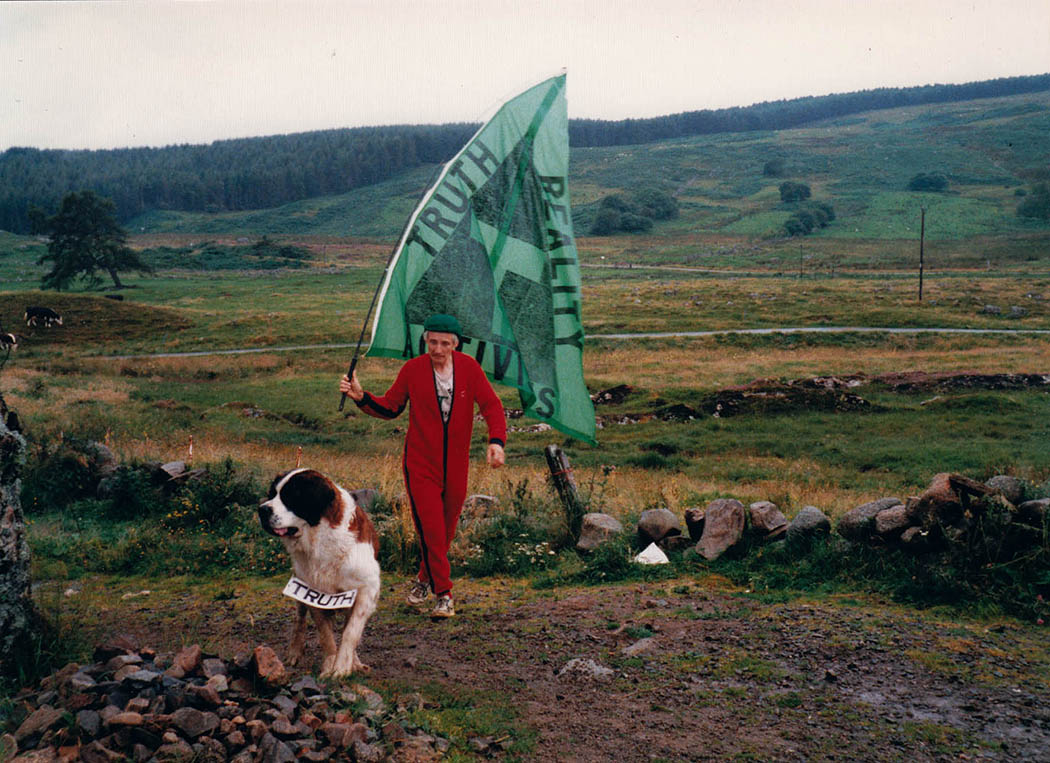
Currently on show is Madman on a Lifeboat, a visualisation and exploration by artist Matt Stokes into the story of Truth, Reality, Activism. This one-man movement was founded in the 1980s by East Londoner Charlie Seber when working as a builder in East End, an area that was developing culturally from a dilapidated past. ‘TRA’ might be considered as an umbrella housing quasi-religious faiths, enacted through monologues and song manifesto with a strong visual language. Matt Stokes, whose artistic practice investigates subcultures (especially musical communities), gradually reveals the creation of an imaginative mind by structuring the gallery into three sections that can almost be read like chapters.
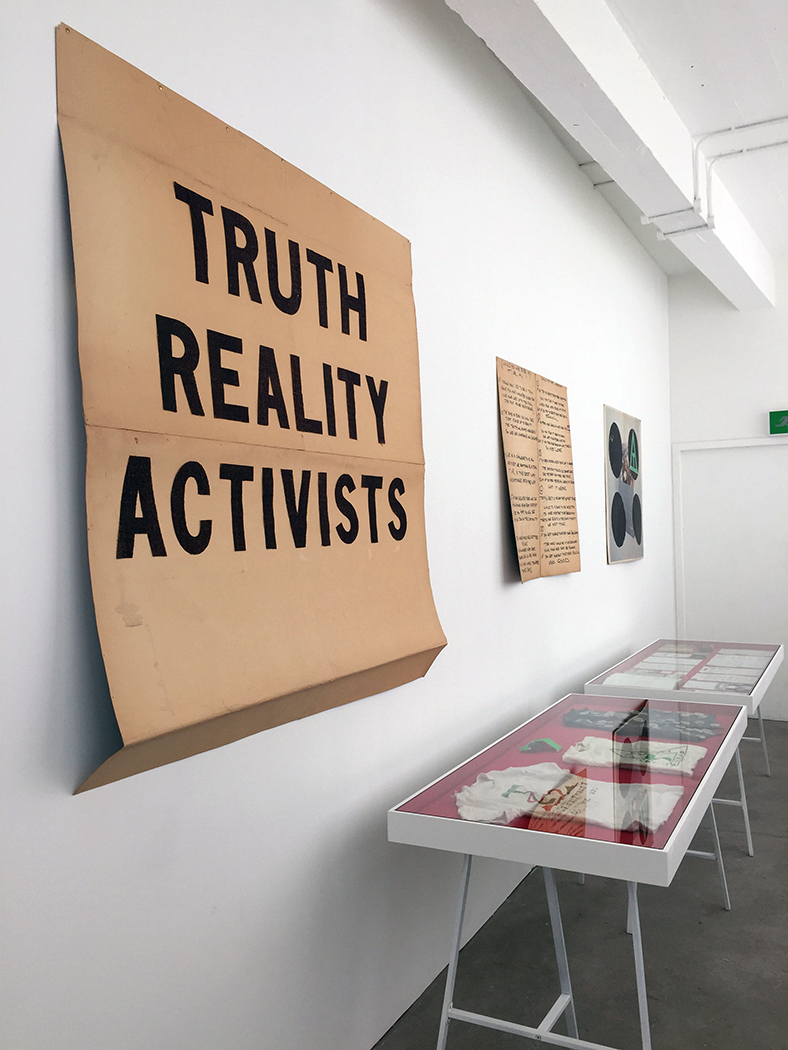
The first part displays an arrangement of found wood recalling the common image of a wall-mounted stag’s head. Alongside, in a traditional museum style vitrine, a red uniform evokes a sense of science fiction or perhaps a voyage. Two badges are pinned on the fabric of a capital T inside a green triangle: the logo of ‘TRA’.
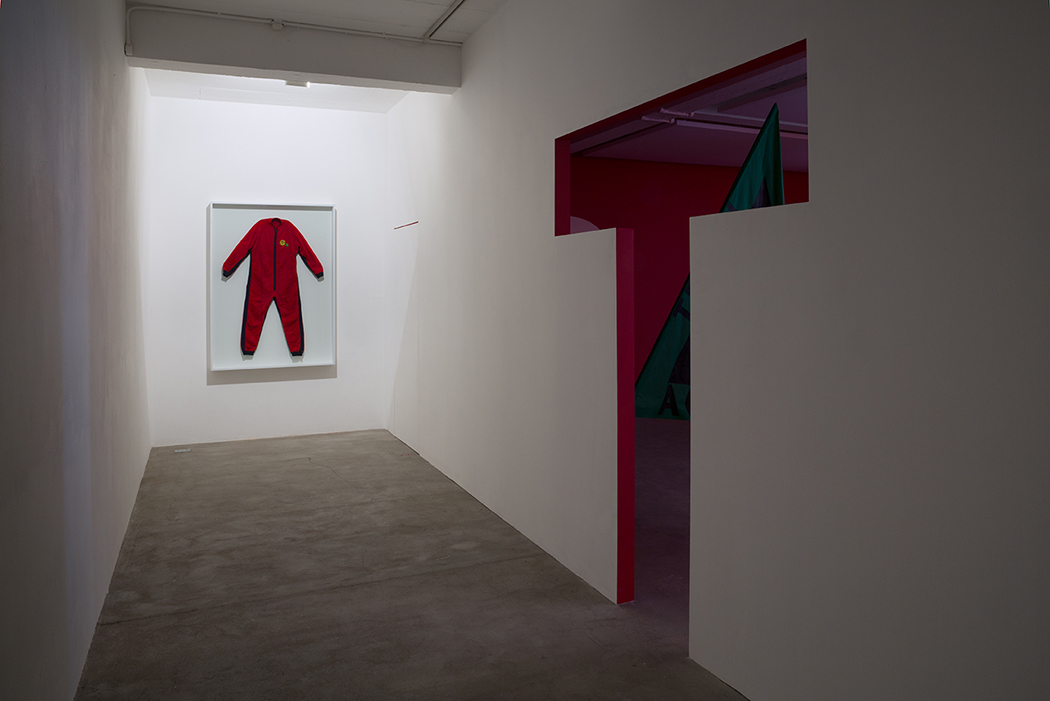
To enter the next chapter, you have to step through a T-shaped door that is modelled after the movement’s first word. It then becomes clear that the artefacts are recurring motifs throughout the show: the stag’s head can be discovered hanging above a fireplace in an enlarged photograph of Charlie Seber; the same logo as on the badges is printed on large green flags spread through the space, and the uniform worn by Seber appears on an image part of a film screened in the same space.
This second chapter is dark and poorly lit; the only source of light are the headlights of a bright blue car. Due to its large size and its prominent positioning in the middle of the room, the car and its weight cannot be avoided. Both sides of the car display a mysterious logo of a ‘T’ that is different from the logo on the two badges – perhaps it is an earlier design.
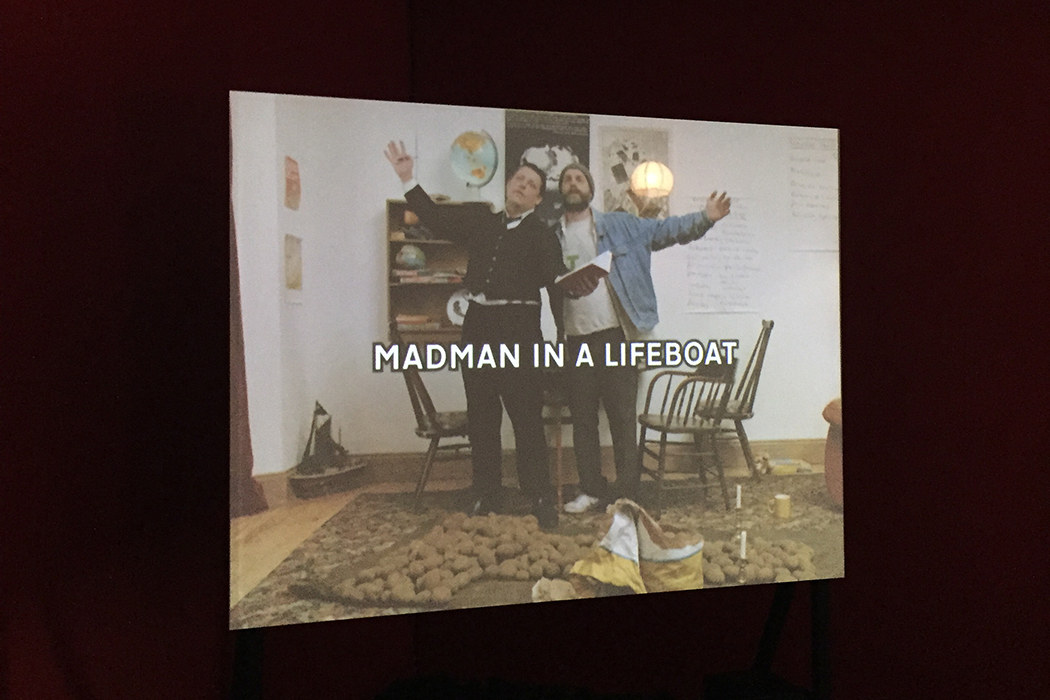
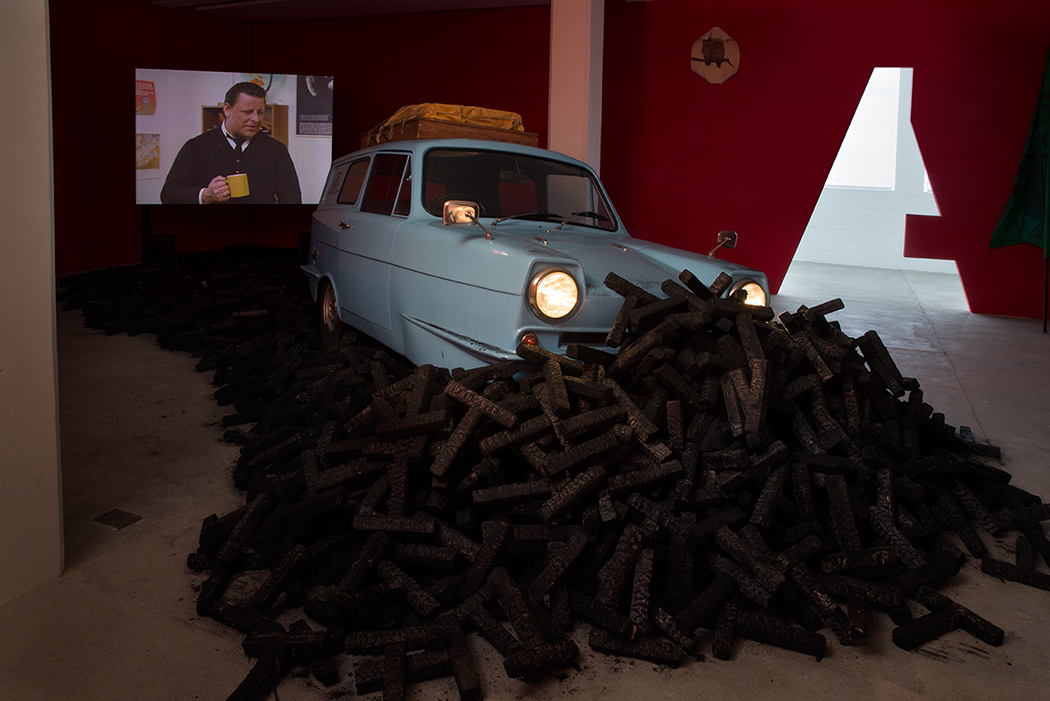
These various objects act like clues between the different chapters unravelling the tale of this one-man movement. They transform the show into a journey of cross-references gathered throughout the different chapters that have borrowed the visual language of ‘TRA’. The story is tied together by a film, Madman on a Lifeboat. This film is a pilot of a comedy show written by Seber in the 1980s but only recently recorded in collaboration with Matt Stokes. The protagonists of this film, Jim and Dave, discuss ‘TRA’ in a sitcom setting, with Dave openly criticising his companion’s ideals although his disapproval only seems to inspire Jim to write a song for the movement. After several verses, however, Dave’s objections seem to disappear as he joins Jim in song-turned-manifesto.
The last door, in the shape of another letter (A for ‘Activism’) leads the way to the final chapter of this story that gives a glimpse inside the inventive mind of Seber through a display of t-shirts, texts, posters, booklets, and other paraphernalia that are all self-made and written by Seber.
Although the movement seems to linger between reality and fiction, through Matt Stokes’ exploration Truth, Reality, Activism comes to feel like a subculture that has been overlooked during its own time, which would have otherwise gone untold if not for this exhibition.
Madman in a Lifeboat is on display until 24 May 2015 and runs parallel with a presentation of Matt Stokes’ Cantata Profana at Dilston Grove, a large-scale film installation that has previously been shown at De Hallen in Haarlem.
Adriënne Groen is a London-based curator
All images from the exhibition, courtesy Matt’s Gallery, London
Adriënne Groen


